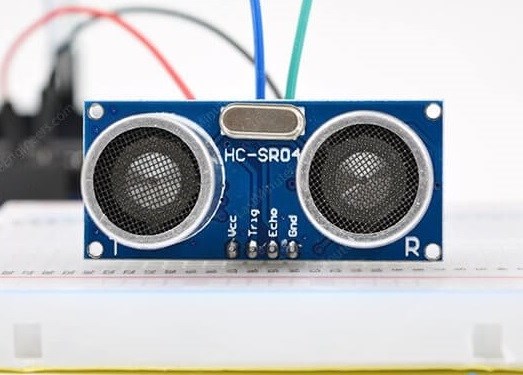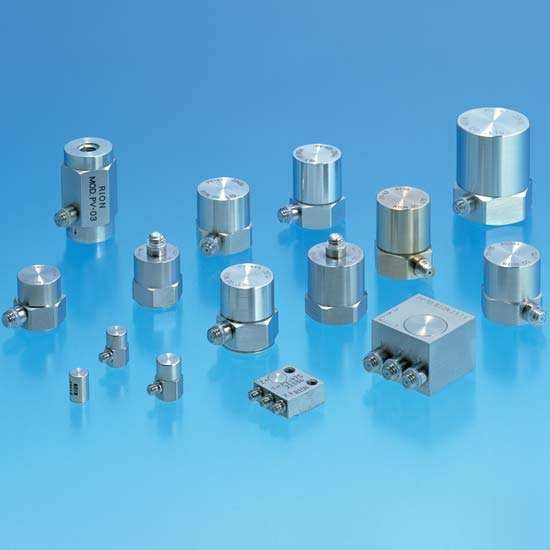Sort by
 What is a Fiber Optic Connector?
What is a Fiber Optic Connector?27 October 2025
Fiber optic connector is a detachable (movable) device between optical fibers. It precisely connects the two end faces of the optical fiber so that the optical energy output by the transmitting fiber can be coupled to the receiving fiber to the maximum extent. Working Principle and Application of Infrared Sensors
Working Principle and Application of Infrared Sensors27 October 2025
The infrared sensor is a sensor used to detect infrared radiation. It mainly has 6 performance parameters including voltage response, response wavelength range, noise equivalent power(NEP), detectivity, specific detectivity, and time constant. There are generally 2 types of infrared sensors, thermal sensors, and photonic sensors. The 2 types have specific working principles but they're both based on the basic law of infrared radiation. And according to the application functions and places, infrared sensors are mainly used in radiation and spectrum measurement, search and track systems, and thermal imaging systems. An Overview of Photoelectric Sensors
An Overview of Photoelectric Sensors27 October 2025
The photoelectric sensor is a key component of photoelectric conversion in various photoelectric detection systems. It is a device that converts optical signals (visible and ultraviolet laser light) into electrical signals. There are many types of photoelectric sensors that use photoelectric elements as sensitive elements, and they are widely used. Photoelectric devices include photocells, photomultiplier tubes, photoresistors, photodiodes, phototransistors, photocells, etc. How do Inductors Work?
How do Inductors Work?27 October 2025
Inductors are energy storage elements that convert electrical energy into magnetic energy for storage. It is similar to a transformer, but the inductor has only one winding. The structure of an inductor is generally composed of a skeleton, a winding, a shield, the packaging material, an iron core, and a magnetic core. All You Need to Know about Ultrasonic Sensors
All You Need to Know about Ultrasonic Sensors25 October 2025
The ultrasonic sensor is a sensor that converts ultrasonic signals into other energy signals. It consists of 4 parts: a transmitter, a receiver, a control part, and a power supply. For ultrasonic probes that can be made from different materials, we should learn about their performances before usage, which includes the working principle, working process, sensitivity, and directivity. Based on the properties of ultrasonic waves, ultrasonic sensors are widely used in communication, medical, and home appliance. Image Sensor: How do CCD and CMOS Sensors work?
Image Sensor: How do CCD and CMOS Sensors work?24 October 2025
An image sensor is a semiconductor device that can convert optical images into digital signals. It is widely used in digital cameras and other electronic optical devices. The image sensor uses the photoelectric conversion function of the photoelectric device to convert the light image on the photosensitive surface into an electrical signal in a proportional relationship with the light image. There are two kinds of image sensors which are CMOS and CCD. CCD and CMOS have their advantages in different application scenarios. What is a Vibration Sensor?
What is a Vibration Sensor?24 October 2025
The vibration sensor is used to detect the impact force or acceleration of the sensor. It usually uses piezoelectric devices which will generate charge under a stress. The vibration sensor can be used for long-term monitoring of vibration and displacement, thermal expansion amount of rotor, and chassis. Switching Diodes Basics: Working, Types and Circuit Analysis
Switching Diodes Basics: Working, Types and Circuit Analysis24 October 2025
Switching Diodes are a type of semiconductor diode. They are specially designed and manufactured for "on" and "off" on a circuit. As the name suggests, it refers to a diode with a switching function. Inductor Basics: Structure, Parameters, and Measurement
Inductor Basics: Structure, Parameters, and Measurement24 October 2025
Inductors are components that can convert electrical energy into magnetic energy and store it. An inductor generally consists of a skeleton, a winding, a magnetic core, an iron core, a shielding case, and a package. Commonly used inductors are adjustable inductors and choke inductors. In the circuit, the inductor prevents the AC and allows DC to pass through. Introduction to Types of Motion Sensors
Introduction to Types of Motion Sensors24 October 2025
Motion sensor refers to a device that detects the motion of an object or person, including gravity, linear acceleration, rotation vector, vibration frequency, etc. Motion sensors can be used to monitor device movements such as tilt, shake, rotation, or swing. Among them, the rotation vector sensor and the gravity sensor are the most commonly used sensors for motion detection and monitoring. Today we come to learn about various types of motion sensors, including accelerometers, tilt sensors, vibration sensors, PIR (passive infrared) sensors, and rotation sensors. Introduction to Temperature Sensors
Introduction to Temperature Sensors24 October 2025
The temperature sensor refers to a sensor that can sense the temperature and convert it into a usable output signal, which is the core part of the temperature measuring instrument. It's divided into 5 types and each type has unique working principles. Besides, some factors need to be noticed in the installation and using process. For the temperature sensor can accurately measure the ambient temperature, it's widely used in various fields and provide convenience for people's production and daily lives. What are Proximity Sensors?
What are Proximity Sensors?24 October 2025
The proximity sensor is a general term for a sensor that replaces contact detection methods such as limit switches. It aims to detect without contacting the detection object. It can detect the movement information and presence information of the object into electrical signals.

